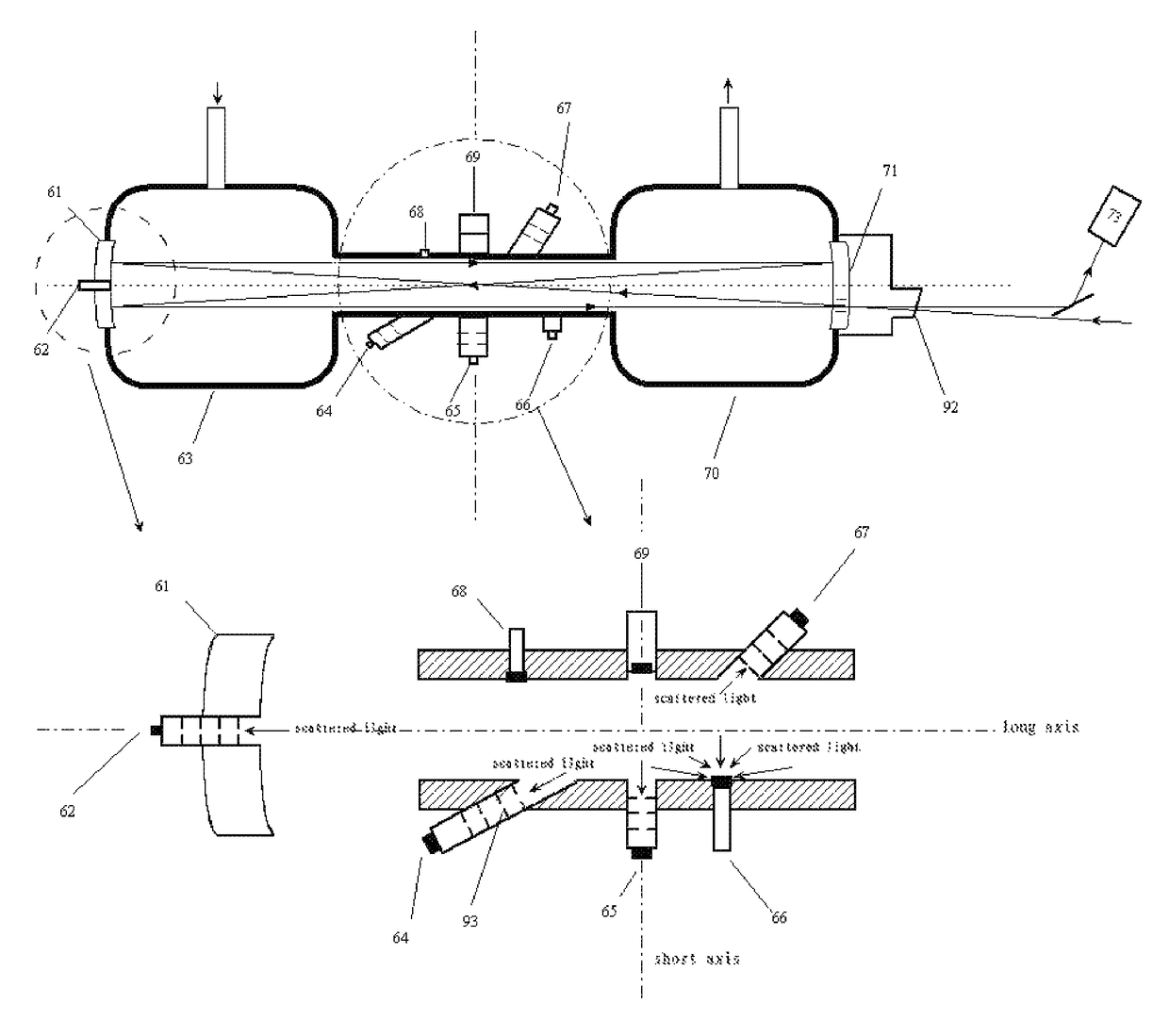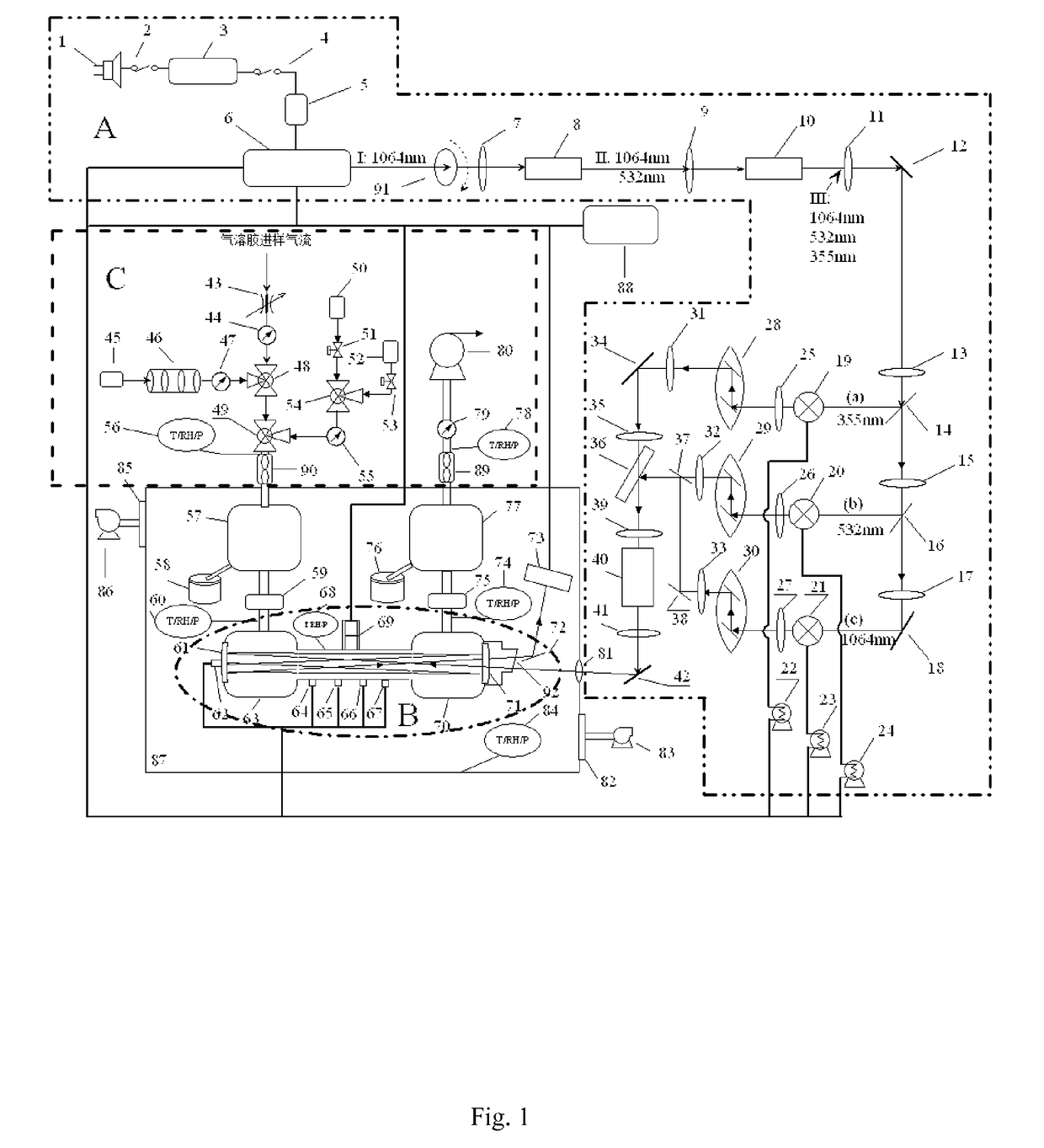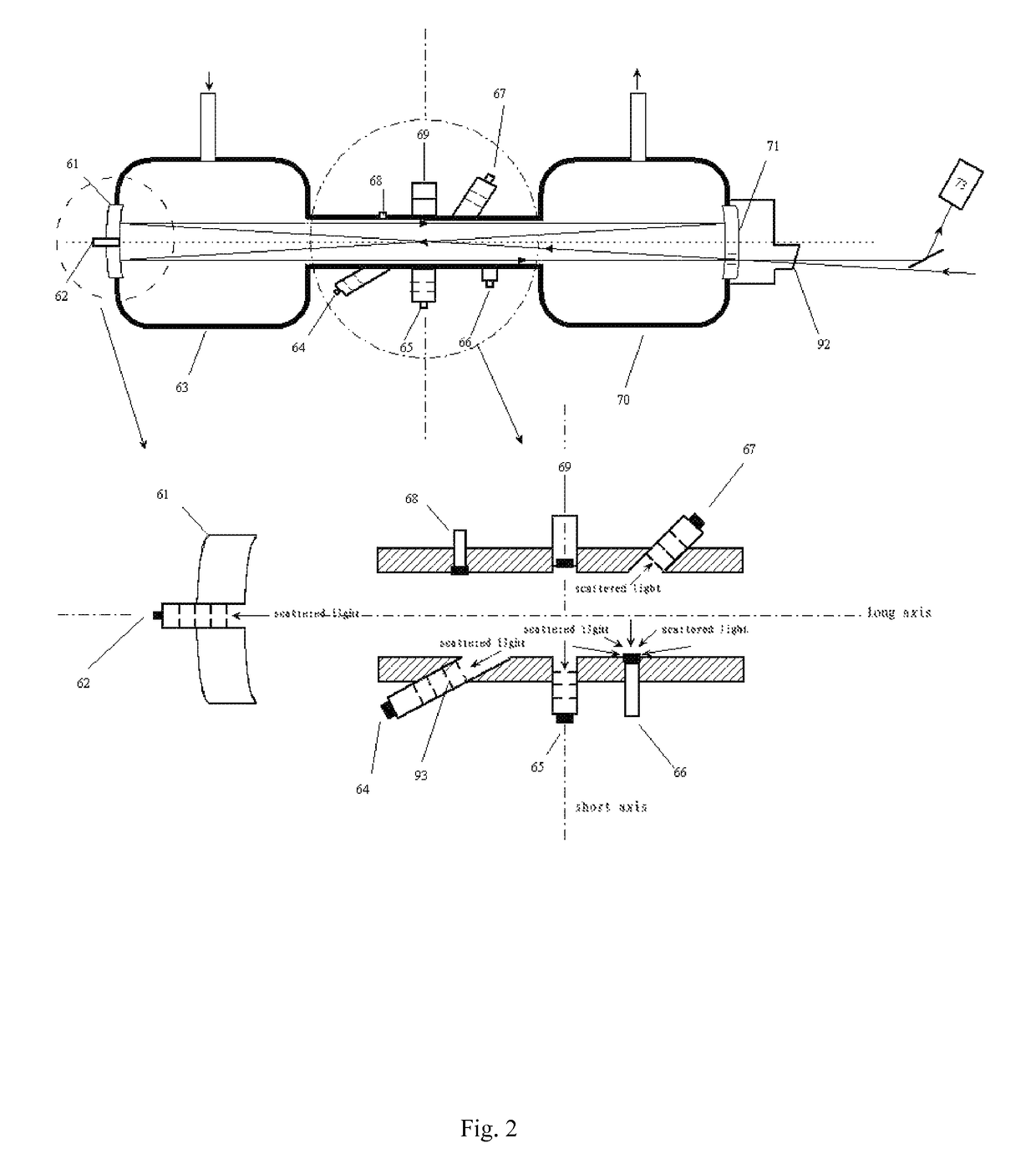Multi-channel aerosol scattering absorption measuring instrument
a multi-channel, aerosol technology, applied in instruments, material analysis using wave/particle radiation, withdrawing sample devices, etc., can solve the problems of aerosol scattering coefficient, phase function, extinction coefficient, synchronous and integrated measurement, etc., to achieve better effects and reduce costs
- Summary
- Abstract
- Description
- Claims
- Application Information
AI Technical Summary
Benefits of technology
Problems solved by technology
Method used
Image
Examples
Embodiment Construction
[0025]The present invention can be better understood with reference to the following examples. However, it should be apparent to those skilled in the art that the specific examples are given by way of illustration only, without implying any limitation to the detailed description in claims of the invention.
[0026]The multi-channel aerosol scattering absorption measuring instrument of the present invention mainly comprises a light path device A, a detection device B, a gas path device C, a temperature control unit, an inlet gas sound insulation device and an exhaust gas sound insulation device.
[0027]The light path device comprises a laser transmission unit and a laser modulation unit, which are connected in sequence. Wherein, as shown in FIG. 1, the laser transmission unit comprises a power supply (1), a switch (2), a voltage stabilizer (3), a switch (4), a laser controller (5) and a laser (6); after the switch (2) is actuated, the voltage stabilizer (3) is powered; after the switch (4...
PUM
| Property | Measurement | Unit |
|---|---|---|
| detection angle | aaaaa | aaaaa |
| detection angle | aaaaa | aaaaa |
| detection angle | aaaaa | aaaaa |
Abstract
Description
Claims
Application Information
 Login to View More
Login to View More - R&D
- Intellectual Property
- Life Sciences
- Materials
- Tech Scout
- Unparalleled Data Quality
- Higher Quality Content
- 60% Fewer Hallucinations
Browse by: Latest US Patents, China's latest patents, Technical Efficacy Thesaurus, Application Domain, Technology Topic, Popular Technical Reports.
© 2025 PatSnap. All rights reserved.Legal|Privacy policy|Modern Slavery Act Transparency Statement|Sitemap|About US| Contact US: help@patsnap.com



